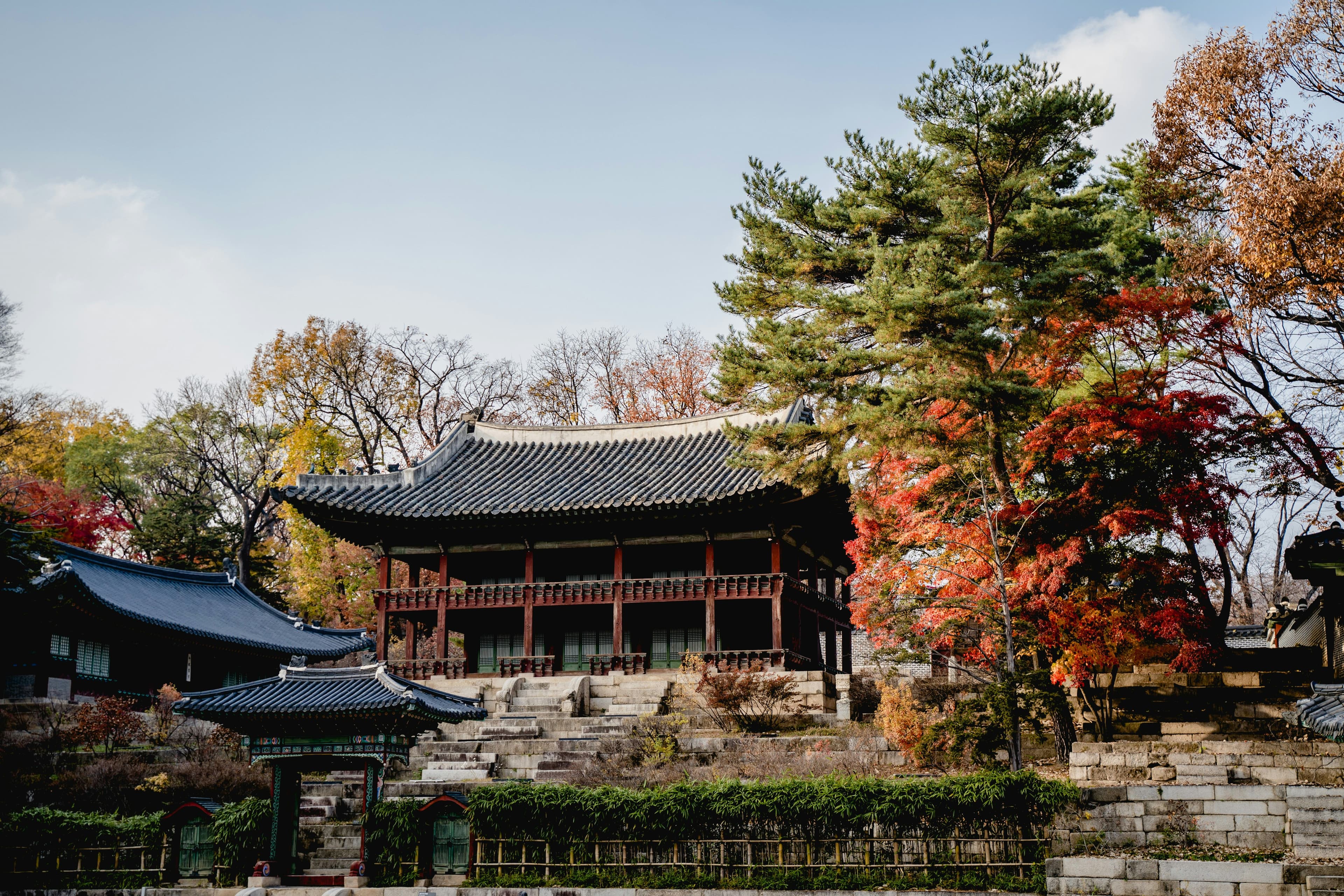
Korean Autumn Walking Tour
Overview
South Korea probably requires very little introduction. When thinking of Korea, probably the first thing coming to mind is the Korean War, and then the fact that Korean products are everywhere these days. From cars to cellular phones to TV sets, we all probably own at least one product made in Korea. This Korea private tour celebrates the fusion Korean contemporary culture is all about, from Confucianism to Buddhism through excessive Consumerism and Materialism, and the admiration of the Korean people for the breathtaking natural features surrounding them. In autumn, the entire country undergoes an immense metamorphosis, as its vast forests are painted red, yellow, and fifty shades of brown. This is when we, and the Koreans in their thousands, go to admire this phenomenon with beautiful walks through national parks and nature reserves. Trip dates indicated below are chosen to coincide with the best autumn foliage. However, this trip is available all year round, and we would love to arrange a Korea private tour at any time of your convenience. The regions included in this trip offer incredible sights and excellent hikes all year round, each season with its own unique characteristics. Recommended dates for Korea private tour: April and May to enjoy the spring blossom, June, and of course, September to the beginning of November for fantastic autumn foliage. July and August are also possible, but days might turn hot at times.
Highlights
- Stand on History's Edge. Visit the DMZ, the world's most guarded border, symbolizing division and hope.
- Hike Korea's Natural Jewels. Explore Seoraksan and Jirisan, two of Korea's most stunning mountain reserves.
- Step into Living Heritage. Wander through Hahoe Village, Bulguksa Temple, and Gyeongju's "museum without walls."
- Taste the Local Life. Stroll bustling night markets, seafood alleys, and tea plantations bursting with color.
- Experience Korea's Spiritual Core. Discover ancient Buddhist temples like Haeinsa and Beomeo.
- Embrace Old Meets New. From Seoul's palaces and hanok lanes to futuristic landmarks like Dongdaemun Design Plaza.
Itinerary
Itineraries on some departure dates may differ, please select the itinerary that you wish to explore.
Day 1
Arrival in Seoul
Day 12
Exploring Old Seoul
Day 2
Along the Demilitarized Zone and on to Sokcho
Day 3
Hiking Through Seoraksan Nature Reserve
Day 4
From Sokcho to Andong
Day 5
Haeinsa and Jirisan Nature Reserve
Day 6
Hike Jirisan Nature Reserve
Day 7
Boseong Tea Plantation and Suncheon Bay
Day 8
To Busan
Day 9
Hike Geumjeong Mountain
Day 10
Drive to Gyeongju
Day 11
Revert to Seoul
Day 13
Departure From Seoul
Dates & Pricing
Korea private tour rates are quoted in US Dollars. Trips@Asia reserves the right to change Korea private tour prices and programs due to changes in flight schedule, changes in airfares, and other local circumstances. Prices are based on twin share occupancy. Rates for private groups of 2 travelers and above: 2 travelers- US$5,499/ person 4 travelers- US$3,450/ person
Dates | Status | Price | Notes | |
|---|---|---|---|---|
| 16 Oct 2026 - 28 Oct 2026 | available | $ 3,356 | - |
Is this trip right for you?
You enjoy an active pace. This journey mixes city walks, temple visits, and mountain hikes through Korea's landscapes.
You value cultural depth. Each day connects you with history, philosophy, and the daily life of Koreans.
You're open to authentic stays. Includes a traditional homestay with floor bedding and local meals.
You appreciate variety. From bustling Seoul to serene tea fields and quiet temples, no two days are alike.
You're curious and adaptable. Ideal for travelers eager to explore both modern innovation and timeless tradition.
You're comfortable with early starts and full days. Designed for those who like to see and experience as much as possible.